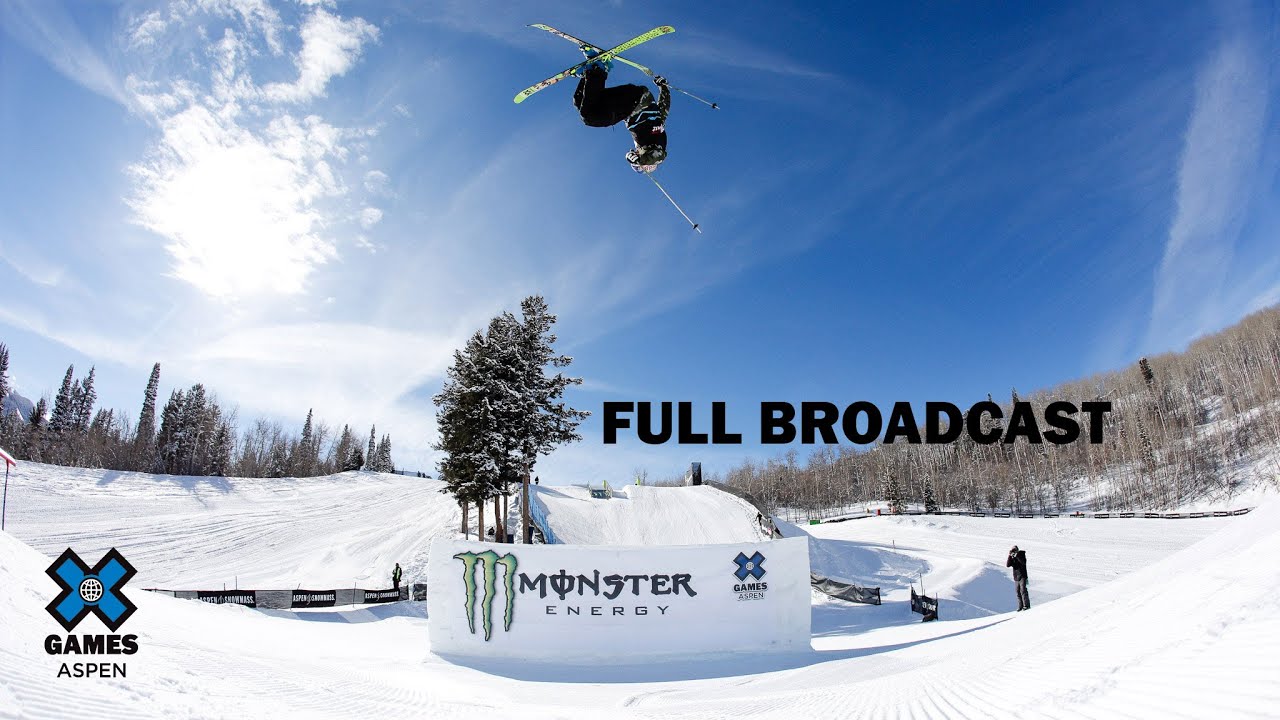
Event News
X Games Men’s Ski Slopestyle Elimination: No Throwaway Runs
Ski action continued today at the 2020 Winter X Games in Aspen with the Men’s Ski Slopestyle elimination round: 15 skiers fighting for 5 finals spots in a 50-minute jam session.
The X Games has gone all in on a new judging format based on overall impression. No more scores, no more “winning runs” per se, but rather a ranking based on the athlete’s performance throughout the entirety of the jam session.
The reasons for this format change-up are readily apparent. There’s no long delays while judges deliberate a score for a run, making for a more fast-paced contest. There are also no “throwaway runs” as such: when a rider screws up on the first feature in the course, he or she is still obligated to throw down as best they can on the rest of their run. “You can’t just do one run, you have to perform the entire event” is the new mantra.
In addition to these broadcast-friendly motivations, the move also seems roughly in line with a not-so-hidden secret of freeski judging in general: that riders’ runs are judged against each other. That is to say, the results aren’t based on completely objective scores, but rather that those numbered scores are commonly adjusted to put one rider in front of another in the ranking: Tom’s run was better than Joe’s run which scored a 92, so Tom receives a 93. In this light, the new scoring system really isn’t all that different from what we had before.
And yet, the Overall Impression format leaves us with more questions than answers. Does a guy who lands three mediocre runs beat a guy who lands the slopestyle run of the century, then crashes twice? Can someone still win the contest, even with slight mistakes in each of their runs? What does it all mean?

X Games Men´s Ski Slopestyle Eliminations | Full Replay (YouTube)
This much is clear: stomp at least one big run clean, and you’ll move into the high end of the rankings. No surprise there. Stomp two big runs clean, and you’ll be hard to unseat from the top five. That’s how it played out for the three top finishers of the day—Colby Stevenson, Fabian Bösch and Andri Ragetti—who all put down their first two runs clean.
Where things get interesting, though, is the fourth and fifth positions and beyond. Here the judges have their work cut out for them to separate the wheat from the chaff—to keep an overview of a rider’s performance after three different runs, and rank them accordingly. In this contest, these challenges manifested in a confusing showdown between Nick Goepper and Birk Ruud to see who’d break into the finals. On a run in which he came off early on the first rail, Birk still managed to bump Nick from the top five. But Nick, nursing a recently dislocated shoulder but still throwing down like a bat out of hell, landed his third run to reclaim his spot in the finals.
It’s difficult to parse the effect of the new judging format. Yes, it allows for more diverse runs—something most freeski fans should be happy about. But it also seems to keep athletes from trying to pack all of their best tricks into one monster run—the kind of run that’s remembered for years. And the athletes themselves seemed sometimes not so pleased at the prospect of having to ski out each run to its entirety, rather than taking it easy after a mistake and focusing on landing the next run.
In conclusion? To be honest, most of the placements are the same as they’d have been without the new judging formats, with less delay in the snow but also less transparency in the judging. How well will the new format hold up in a heated final round? We’ll find out soon enough.